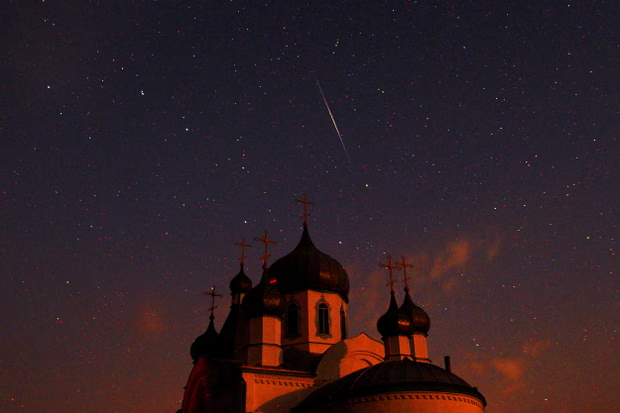Perseid meteor shower 2025: How to catch summer’s most famous cosmic show

Brilliant Perseids meteor shower set to peak August 12, lighting up the night sky with streaks from Comet Swift-Tuttle.
One of the night sky’s most anticipated events returns tonight as the Perseid meteor shower reaches its peak between August 12 and 13. Known for producing bright, fast-moving meteors — and occasionally dazzling fireballs — the Perseids are a highlight of the summer stargazing season.
This year’s peak comes with a twist: the waning gibbous moon will be glowing at 86% brightness, meaning its light will wash out all but the brightest streaks. Still, seasoned skywatchers and newcomers alike may be rewarded with spectacular sights, especially if they venture to areas far from city lights.
When and Where to Look
The best viewing window for most observers will be in the early morning hours of August 13, ideally between 1 a.m. and 5 a.m. local time. Under perfect conditions, the Perseids can produce up to 100 meteors per hour, but this year, because of the moonlight, realistic expectations are closer to 10–15 per hour.
NASA notes that you may also spot meteors earlier in the evening — as early as 10 p.m. — when so-called “earthgrazers” streak low across the horizon. These tend to be slower, longer, and more dramatic. For the best chance of catching them, keep the moon at your back and face north toward the constellation Perseus, where the shower’s radiant lies.
Why the Perseids Are Special
The Perseids occur when Earth moves through a stream of debris left behind by Comet 109P/Swift-Tuttle. Traveling at roughly 37 miles per second (59 km/s), these particles burn up in our atmosphere, creating bright trails that last only seconds but can be breathtaking.
Because of their brightness and frequency, the Perseids are a favorite among astronomers and casual observers alike. Even in years with challenging conditions — like this one, with a bright moon — the possibility of spotting a rare, camera-worthy fireball keeps people watching.
Tips for the Best Experience
-
Find a dark sky spot: Light pollution drastically reduces visibility. Rural locations and higher elevations are best.
-
Bring a reclining chair or blanket: You’ll want to be comfortable as you keep your eyes on the sky for extended periods.
-
Allow your eyes to adjust: Give yourself at least 20–30 minutes away from bright light before viewing.
-
Use a star app: Apps can help locate Perseus and find the radiant point, about 40° above the horizon.
-
Be patient: Meteor watching is a waiting game — but one that often pays off.
Perseid Meteor Shower 2025 — At a Glance
Peak Dates: August 12–13, 2025
Best Time to Watch: 1–5 a.m. local time (predawn)
Where to Look: Northeast sky, toward the constellation Perseus
Expected Rate: 10–15 meteors per hour (due to moonlight)
Special Sightings: Possible bright fireballs and earthgrazers early in the night
Cause: Debris from Comet 109P/Swift-Tuttle hitting Earth’s atmosphere at 37 miles per second
Viewing Tip: Keep the moon at your back for best results

